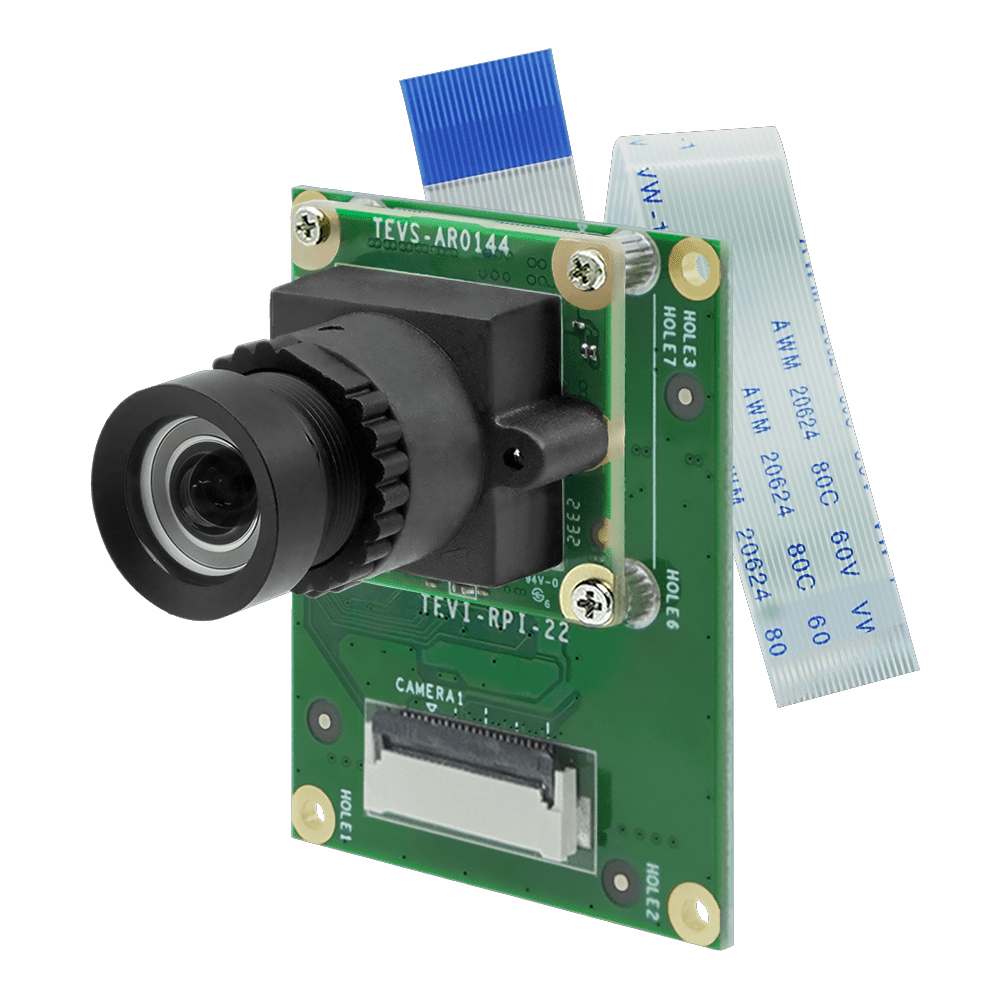TechNexion Cameras for Lex 2NOR01 with Jetpack 6.2
Instruction
TechNexion Embedded Vision Solutions provide embedded system developers access to high-performance, industrial-grade camera solutions to accelerate their time to market for embedded vision projects.
Supported Camera Modules
| Camera Series | Products |
|---|---|
| TEVS | TEVS-AR0144 TEVS-AR0145 TEVS-AR0234 TEVS-AR0521 TEVS-AR0522 TEVS-AR0821 TEVS-AR0822 TEVS-AR1335 |
| VLS-GM2 | VLS-GM2-AR0144 VLS-GM2-AR0145 VLS-GM2-AR0234 VLS-GM2-AR0521 VLS-GM2-AR0522 VLS-GM2-AR0821 VLS-GM2-AR0822 VLS-GM2-AR1335 |
More Camera Products Details...
Supported NVIDIA Jetson Partner Platforms
Install TN Camera on NVIDIA Jetson Partner Platforms
Connect to NVIDIA Jetson Partner Platforms
- TEV-RPI22 adaptor for TEVS cameras

- VLS-GM2-ORIN-EVK adaptor for TEVS cameras
Using TechNexion Pre-built modules
We recommend following the user manual from platform vendors to setup system. After that, you can follow the below method to install TechNexion Cameras Driver.
-
Download pre-built modules.
$ wget https://download.technexion.com/demo_software/EVK/NVIDIA/2NOR01/pre-built-modules/latest/JP62/tn_camera_modules_jp62.tar.gz -
Uncompress the modules.
$ tar -xf tn_camera_modules_jp62.tar.gz -
Run installation script.
$ cd tn_camera_modules_<built_time>/
$ ./tn_install.sh -
After you agree to continue the installation, the module will be installed to the system.
$ ./tn_install.sh
****** TechNexion Camera Driver Installation ******
This installation is easy to install TechnNexion Camera Drivers for Nvidia
Jetson Orin Nano Platform. Before start to install camera driver,
You should BACKUP your image to avoid any file you lost while installing process.
Do you want to continue?[Y/n]Y
Continuing with the installation...
Install TN-CAM modules: max96724.ko
Install TN-CAM modules: max96717.ko
Install TN-CAM modules: tevs.ko
Install TN-CAM DTBO file: tevs-dual
Installed TN-CAM DTB file Done.
Install TN-CAM DTBO file: vls-gm2
Installed TN-CAM DTB file Done.
Install TN-CAM DTBO file: vls-gm2-fsync
Installed TN-CAM DTB file Done.
Install TN-CAM DTBO file: vls-gm2-tunnel
Installed TN-CAM DTB file Done.
Install TN-CAM DTBO file: vls-gm2-tunnel-fsync
Installed TN-CAM DTB file Done.
Select modules:
[1]: TEVS: TEVS Series MIPI Cameras with TEV-RPI22 Adaptor
[2]: VLS-GM2: VLS-GM2 Series Cameras with VLS-GM2-ORIN-EVK Adaptor
Which modules do you select?[default:1]noteYou should reboot the device after installation.
Bring up Camera
TechNexion VizionViewer
Gstreamer
If you succeed in initialing the camera, you can follow the steps to open the camera.
-
Check the supported resolutions.
$ gst-device-monitor-1.0 Video/Source
Probing devices...
Device found:
name : vi-output, tevs 9-0048
class : Video/Source
caps : video/x-raw, format=UYVY, width=640, height=480, framerate=60/1
video/x-raw, format=UYVY, width=1280, height=720, framerate=60/1
video/x-raw, format=UYVY, width=1280, height=800, framerate=60/1
video/x-raw, format=NV16, width=640, height=480, framerate=60/1
video/x-raw, format=NV16, width=1280, height=720, framerate=60/1
video/x-raw, format=NV16, width=1280, height=800, framerate=60/1
video/x-raw, format=UYVY, width=640, height=480, framerate=60/1
video/x-raw, format=UYVY, width=1280, height=720, framerate=60/1
video/x-raw, format=UYVY, width=1280, height=800, framerate=60/1
properties:
object.path = v4l2:/dev/video0
device.api = v4l2
media.class = Video/Source
api.v4l2.path = /dev/video0
api.v4l2.cap.driver = tegra-video
api.v4l2.cap.card = "vi-output\,\ tevs\ 9-0048"
api.v4l2.cap.bus_info = platform:tegra-capture-vi:0
api.v4l2.cap.version = 5.15.148
api.v4l2.cap.capabilities = 84200001
api.v4l2.cap.device-caps = 04200001
device.id = 34
node.name = v4l2_input.platform-tegra-capture-vi
node.description = "vi-output\,\ tevs\ 9-0048"
factory.name = api.v4l2.source
node.pause-on-idle = false
factory.id = 10
client.id = 32
clock.quantum-limit = 8192
media.role = Camera
node.driver = true
object.id = 35
object.serial = 35
gst-launch-1.0 pipewiresrc path=35 ! ... -
Bring up the camera (/dev/video0) with 1280x720 by Gstreamer pipeline:
$ DISPLAY=:0 gst-launch-1.0 v4l2src device=/dev/video0 ! \
"video/x-raw, format=UYVY, width=1280, height=720" ! xvimagesink sync=false
Troubleshooting
-
Cannot find cameras
If you cannot bring up the cameras, you can check if the video device does exist.
$ ls /dev/video* # List all video devices
/dev/video0 /dev/video1If you cannot see the devices, you should check if the drivers have been probed.
-
Occur Error: Could not get EGL display connection
If you occurred the errors nvbufsurftransform: Could not get EGL display connection by rununing the Gstreamer command, you can modify the parameter
DISPLAYby the command:# Check and Set environment parameter for 'DISPLAY'
$ export DISPLAY=$(w| tr -s ' '| cut -d ' ' -f 3 | grep :)
# Run Gstreamer pipeline
$ gst-launch-1.0 v4l2src device=/dev/video0 ! \
"video/x-raw, format=UYVY, width=1280, height=720" ! xvimagesink sync=false -
CPU overload when camera streaming
If you open the camera stream and find that the CPU load is too large, it may be because Gstreamer does not use the GPU. You have to install some NVIDIA plug-in tools on Gstreamer.
$ sudo apt update && apt depends nvidia-jetpack | awk '{print $2}' | uniq | xargs -I {} bash -c "sudo apt -o Dpkg::Options::="--force-confold" -y install {} ; sudo apt clean"